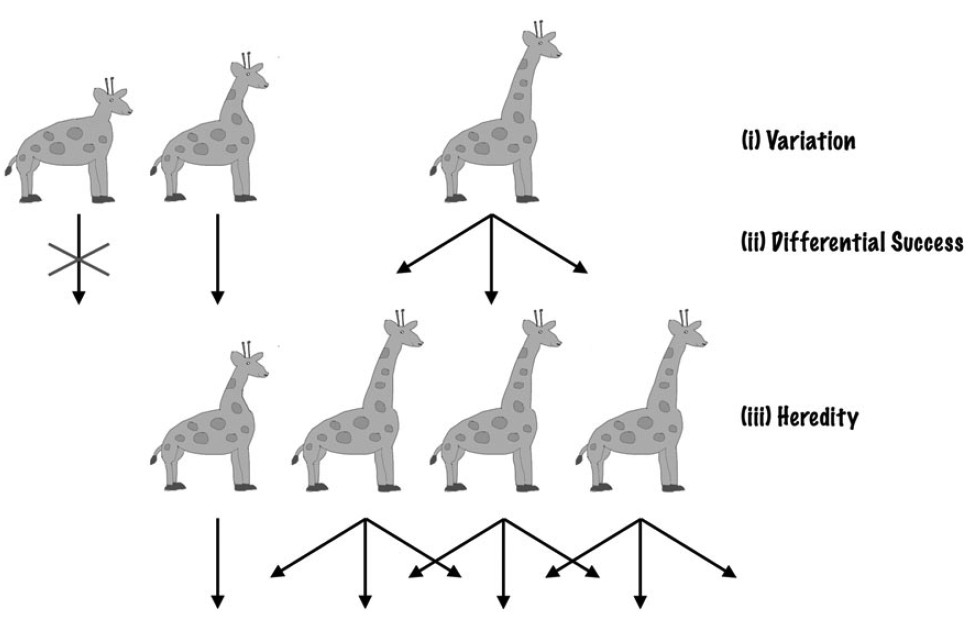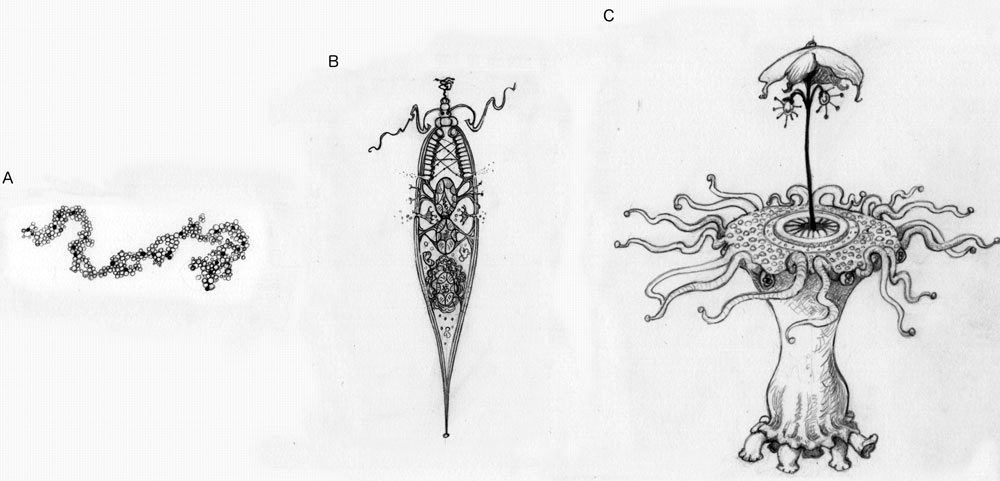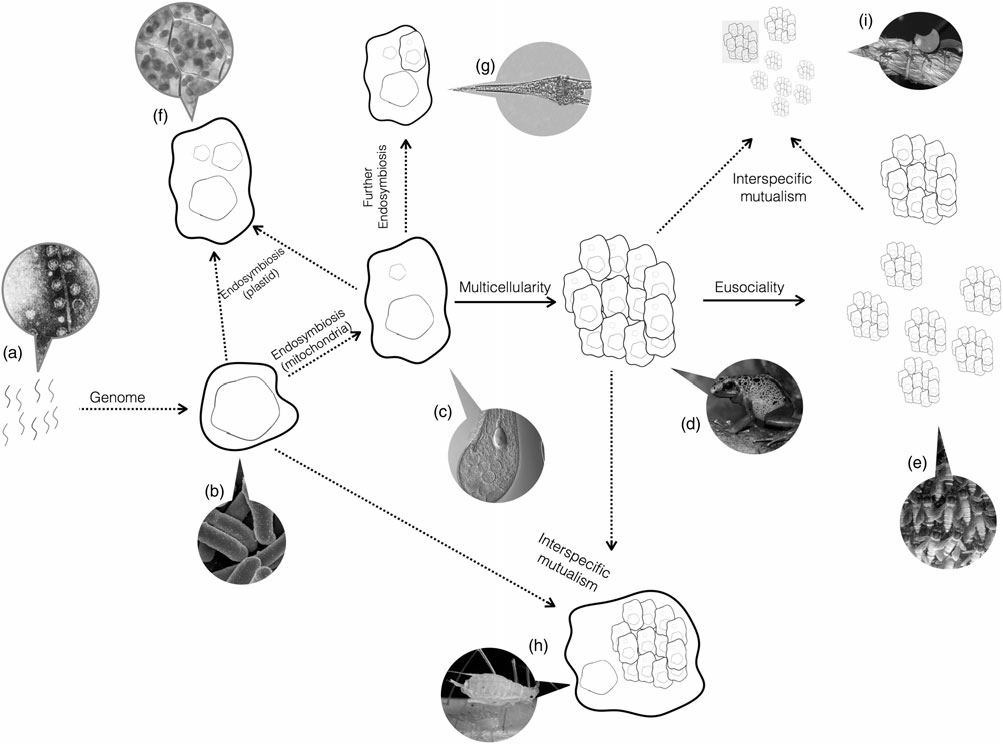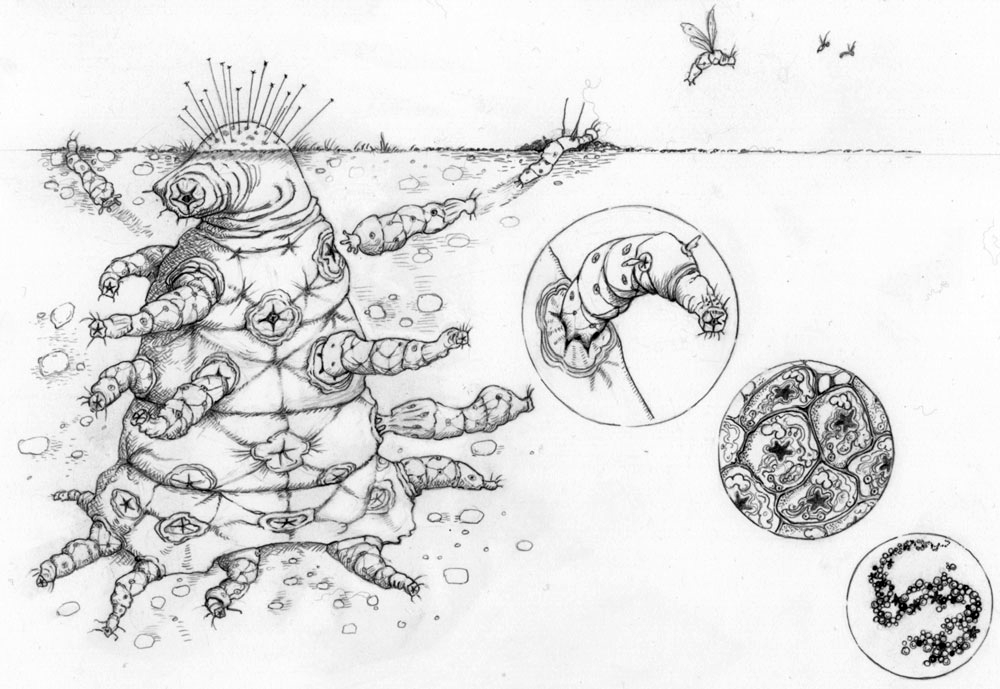Aliens by Darwin
 Only in our galaxy about 100 billion planets. About 20% of them are probably located in the habitable zone, which allows for the existence of the biosphere there. Even if life was born only on 0.001% of these planets, then in our galaxy there are about 200,000 inhabited planets. At the same time, the radio signal of the technogenic civilization of the Earth has already spread within a radius of 70 light years - and continues to spread, informing everyone about our existence. Given the highest chances of meeting with an alien form of life, it is not surprising how rapidly astrobiology is developing. Hundreds of millions of dollars are invested in the search for extraterrestrial life forms in the United States and Europe. Almost any branch of science can envy such investments.
Only in our galaxy about 100 billion planets. About 20% of them are probably located in the habitable zone, which allows for the existence of the biosphere there. Even if life was born only on 0.001% of these planets, then in our galaxy there are about 200,000 inhabited planets. At the same time, the radio signal of the technogenic civilization of the Earth has already spread within a radius of 70 light years - and continues to spread, informing everyone about our existence. Given the highest chances of meeting with an alien form of life, it is not surprising how rapidly astrobiology is developing. Hundreds of millions of dollars are invested in the search for extraterrestrial life forms in the United States and Europe. Almost any branch of science can envy such investments.
Many scientific articles have been published with attempts to analyze how aliens may look: for example, see Benner (2003) , Devays (2009) , Rothschild (2009) , Rothschild (2010) , Shostak (2015) . For example, Shostak from the SETI project suggests that we would rather meet with some kind of artificial life form (maybe, robots under AI control).
In any case, it is interesting to know what the biological form that created this AI looks like.
So far, attempts have been purely mechanical to predict this - by extrapolating the experience of the earth's evolution (unfortunately, we are still familiar with the experience of evolution on only one planet, therefore it is difficult to make other extrapolations). For example, it is known that during evolution, the eye-like organs (photoreceptors and eyes) have evolved at least 40 times (or up to 65) and are present in 95% of terrestrial animals. So something like this should be with aliens. Other mechanical extrapolations about chemistry and physics of aliens are made in the same way. For example, carbon is abundant in the Universe, exists in different forms, forms diverse chemical compounds and is in interstellar matter - it is logical to assume that alien life must be based on carbon. But all this is pure extrapolation. There is no theoretical reason why aliens cannot be a silicon eyeless form of life.
Another variant of predicting the type of extraterrestrial life forms is to use theory. In this case, it is the theory of evolution. At least, it was this theory that made it possible to predict and describe the many biological effects on Earth: from the behavior of animals to their morphology. For example, why some organisms, especially insects, need to change the sex of their offspring, or why men should be larger in men than women. Evolutionary theory really works in practice and is able to predict and describe real effects. So why not apply this (universal) theory in an attempt to describe the possible appearance of aliens? A group of scientists from the Department of Zoology of the University of Oxford - Samuel Levin, Thomas W. Scott, Helen S. Cooper and Stuart A. West - for the first time in the history of science tried to combine mechanical and theoretical approaches to solve this problem, that is, to describe the appearance of aliens. Their scientific article “Aliens after Darwin” (“Darwin's aliens”) was published on November 1, 2017 in the International Journal of Astrobiology (doi: 10.1017 / S1473550417000362).
In their work, they argue about some aspects of the theory of evolution. For example, should aliens have natural selection and what consequences will it have in case of its existence.
Then they consider a specific possible type of alien organisms: complex multicellular organisms. How such organisms appeared in the course of the Earth evolution, how they can appear in another part of the Universe and what biological properties can be expected from aliens.
Darwin explained that natural selection works through three functions:
- diversity (creatures differ from each other in behavior and structure);
- reproductive success (some signs of behavior or bodies increase the likelihood of leaving more offspring than their relatives leave).
- heritability (creatures pass on their traits to offspring);
These three functions are shown schematically in the figure.

Illustration: University of Oxford
Successful signs gradually accumulate in the population, and this is how evolution proceeds. Due to changes in natural or other conditions, other signs may become beneficial, so evolution does not stop.
That is, the existence of natural selection requires the presence of all three of the above functions: diversity, reproductive success, and heritability. If they exist, natural selection takes place, regardless of the genetic system of the organism or the type of planet.
Natural selection explains not only the cause of evolution, but also the reason for adaptation. Even terrestrial nature shows that in the course of evolution organisms are able to adapt to life in the most incredible conditions. If you give the body enough time - then in the end it will take on such an appearance, as if it was specially designed for life under these conditions. This is a kind of “design without a designer,” everything happens naturally.
Random mutations can also move the process of evolution, but without natural selection, they are practically meaningless. There is very little likelihood that complex organs like lung or eyes may appear as a result of random mutations. Here, natural selection plays the role of such guiding force when only the necessary mutations are selected, as if the design of the desired organism is created in advance, which will be most adapted to these conditions.
So, will the scientists from Oxford University ask whether natural selection will act on other planets in space? And immediately answer: yes. The theory of evolution says that it cannot be otherwise, except for the simplest molecules. Without a designer, the only way to get an organism adapted to the conditions, which is aimed at maximum reproduction, is natural selection.
Levin and his colleagues urge not to be distracted by the definition of life and the specific functional differences between the “living” and the “non-living” (replication, metabolism), because without natural selection the body will not be able to adapt to environmental conditions. Therefore, we simply will not find such an alien form of life.
For example, the illustration below shows three variants of alien life. The first option is a simple molecule. Even if we consider this form of life, then it is so simple that it cannot pass the natural selection. The second option is also a very simple creature in the form of a cell. But it can already adapt to the environment. Finally, to the right is a creature with a large number of intricate bodies working together. This gives the greatest adaptability. Such a creature could undergo the most significant changes in the course of natural selection, that is, it took longer than the others to adapt to changes in external conditions.

Three variants of alien life. Illustration: University of Oxford
Here we come to the concept of complexity . Scientists put forward the argument that it is precisely such a complex being that should be more simple adapted to external conditions and to change them — this simply follows from the theory of evolution. It has evolved the longest - hence the conclusion.
It turns out, it is logical to assume that the most adapted aliens, which we can meet, will be complex creatures with a large number of various organs. But this is not necessary, because natural selection does not necessarily imply an increase in complexity for adaptation. However, we can say for sure that they will be more interesting for us.
The authors of scientific work pay attention to the question of how complexity arises. That is how simple organisms become more complex. The answer is major transitions.
The main transitions in evolution have several properties:
- Small objects can come together and form a larger object (chromosomes, eukaryotes, multicellular colonies).
- Smaller objects are often distinguished and exist inside larger objects (DNA and proteins, organelles).
- Smaller objects lose their ability to multiply in the absence of a larger object (DNA, chromosomes, organelles).
- Smaller objects can disrupt the functionality of a larger object (parthenogenesis, cancer).
- New types of information transfer appear (DNA-proteins, cell heredity).
The main transitions are very important in evolution, because thanks to them, in the course of natural selection, organisms of greater complexity arise. Life on Earth has gone through many such major transitions, as shown in the illustration.

The main transitions in the evolution of life on Earth. Illustration: University of Oxford
What will the aliens look like, who in the course of natural selection have increased their complexity through many major transitions? You can predict several features that they will possess.

An example of a complex alien creature that has gone through many major transitions. Illustration: University of Oxford
1. The presence of larger entities created from smaller entities with a nested hierarchy. The complexity of the hierarchy and the number of levels of investment depends on the number of basic transitions. For example, in advanced cases, we can assume “society of societies”, where many social colonies cooperate with each other, and each of them specializes in its function.
2. Regardless of the number of transitions, there must be something that unites the interests or eliminates conflicts between entities at the level of each transition.
3. According to the theory, there must be something to limit the growth of the population - the easiest and best way to eliminate conflicts between entities.
How are conflicts eliminated?
This may be something similar to all partners for mating, as with eusociality - the highest level of social organization of animals on Earth. This is possible when combining similar entities. Having a common pair for mating unites the interests of all members. Or something like a single cell bottleneck in multicellular organisms.
Another option is if different entities are combined. For example, both the mitochondria and the nucleus carry out joint reproduction. If heterogeneous individual entities are combined together, their interests are also united.
In the end, the conflicts of interest of entities can be resolved using both of the above options, as in humans.
So, according to the theory of evolution, aliens must pass a natural selection. These can be complex beings that have gone through a series of basic transitions and have developed appropriate mechanisms for resolving conflicts between entities that arise during basic transitions. Therefore, they must have a complex hierarchy of entities. Well, when everything is clear, it remains only to find them.
All Articles